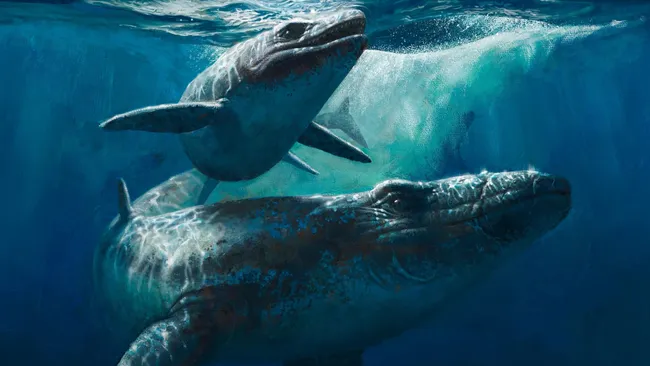A mosasaur species with saw-like teeth that was described by scientists in 2021 may have been based on forged fossils, and researchers are now calling for CT scans to determine the creature’s origin.
A newly described mosasaur species, Xenodens calminechari, could be based on forged fossils, according to a new study. The researchers are now urging for computed tomography (CT) scans to verify the authenticity of the jaw remains, which are believed to date back 72.1 to 66 million years. The study, published on December 16, 2024, in The Anatomical Record, raises concerns about discrepancies in the fossil, suggesting it might be a fake.
The species was first described in 2021 from a partial jawbone and four sharp teeth discovered in a phosphate mine in Khouribga, Morocco. These teeth, which were described as “small, short, bladelike teeth packed together to form a saw-like cutting edge,” were considered unique to the mosasaur species and formed the basis of the original claims. However, these teeth are central to the doubts raised in the new study.
Mosasaur fossils, from predatory marine reptiles that lived during the Cretaceous period, are known for their diverse tooth shapes, corresponding to their varied diets. X. calminechari was said to possess a distinctive arrangement of teeth never seen in any other known mosasaur. This caught the attention of Henry Sharpe, the lead author of the latest study, who began a critical review of the fossil’s anatomy. His investigation revealed troubling inconsistencies.
One key issue is that two of the teeth appear to be positioned within the same tooth socket, contradicting what is known about other mosasaurs, in which each tooth sits in its own socket. Michael Caldwell, a co-author of the new study, explained that this is biologically implausible, as each tooth in a mosasaur’s jaw grows from its own socket. The presence of a single socket for multiple teeth is highly unusual and raises suspicions about the fossil’s authenticity.
Further analysis of the teeth revealed that they also show a “medial overlap”—material extending over the teeth—which is not characteristic of normal mosasaur tooth development. This overlap is considered a strong indicator that the fossil may be a forgery, according to study co-author Mark Powers.
The fossil’s origin also raises questions. It wasn’t excavated by professional paleontologists, and the phosphate mine where it was found is known for fossils that have been tampered with. These factors, coupled with the discrepancies in the fossil itself, prompted the researchers to request CT scans of the specimen to examine its internal structure, but efforts to obtain the scans were met with resistance from Nick Longrich, the lead author of the 2021 study.
Sharpe and his colleagues were concerned when Longrich questioned the purpose of their inquiry, particularly because it involved the holotype—the official specimen representing the species. Sharpe emphasized that withholding such information is considered unethical within the scientific community.
While Longrich has not responded to requests for comment, independent paleontologists like Paulina Jiménez-Huidobro from the University of Bonn agree with the findings of the new study. She pointed out that the unusual dentition and the implantation of the teeth in the jaw strongly suggest that they do not belong to the same species.
Wahiba Bel Haouz, a researcher at Morocco’s University of Hassan II Casablanca, also echoed these concerns, noting that Morocco currently lacks adequate legislation to protect its fossil heritage. She emphasized the importance of collaboration between foreign scientists and Moroccan researchers to prevent the study of forged fossils.
